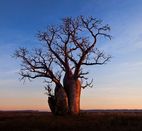
No, it's not another kind of wild animal. It's a tree...but a very unique one. Among the millions of species of trees on the planet, there is nothing quite like the baobab. And my heroine, Harriet Ruby, has to spend the night in one with a baboon.
Okay. So a tree is a tree is a tree. I know you didn't drop in for a botany lesson, but hear me out. It's not just a tree, but a sacred link to the past and an essential part of the cultures where it grows, a symbol of strength, wisdom, health, long life, and beauty.
THE AFRICAN UPSIDE-DOWN TREE
Of the eight species of the genus Adansonia -- You really needed to know that, right? -- six are native to Madagascar, one to the African and Arab peninsulas, and one to Australia. They can live to be thousands of years old, some say as long as 3,000 years or more, and have a peculiar, massive, bottle-shaped trunk and sparse foliage. The branches look like spread out like roots, hence the names "upside-down tree."

- Photo courtesy of TripAdvisor www.tripadvisor.com
Of the eight species of the genus Adansonia -- You really needed to know that, right? -- six are native to Madagascar, one to the African and Arab peninsulas, and one to Australia. They can live to be thousands of years old, some say as long as 3,000 years or more, and have a peculiar, massive, bottle-shaped trunk and sparse foliage. The branches look like spread out like roots, hence the names "upside-down tree."
▼Photo source: www.greatthoughtstreasury.com/ibn-battuta
A famous traveler and writer, Iban Battuta (born 1304 in Tangiers), was the first to record a description of a baobab tree.
The African baobab begins as a single stem without branches and produces roots resembling giant sausages. During its lifetime, the roots of the tree send more stems in a ring which eventually fused, forming a cavity inside. Unlike most trees, the baobab doesn’t sprout more branches but grows new trunks, ultimately creating a large hollow tree.
The Lembo Baobab - Roxana Patrut/A. Patrut Et Al/Plos One 2015
photo source: article by Sarah Zielinski, February 4, 2015 ▼ www.sciencenews.org/hollow-baobab-trees
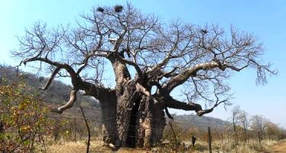
The Sunland Baobab in Limpopo, South Africa, stands 72-feet tall, and is estimated to be as old as 6,000 years old, one of the oldest trees on Earth. Measuring at 155 feet around the base of the trunk, it is hallow and the owners built a pub inside that held fifteen people.
Photo from: www.lostateminor.com by Low Lai Chow Photo source: Van Heerdens (owners), Facebook Page
also: www.tripadvisor.com www.traveller24.com
Sadly, this ancient tree succumbed to age. On 13 April, 2018, the owners, the Van Heerdens, posted this message. "We are sad to announce that our upside-down tree has toppled over this morning at 04:00. Never in our lives could we have imagined that this great giant that has stood sturdy all these years could break so tragically." They also wrote they felt "blessed to have been part of the process."
Scientists who study the Baobab tree have indicated that “seven out of ten of the ancient Baobabs in Africa have collapsed in the last couple of years. The scientists who have studied this tree for over 10 years say there is nothing we could have done."
THE TREE OF LIFE
The peoples who have been fortunate enough to live in proximity to the baobab, call it “The Tree of Life.” And rightfully so. Every part of the tree can be used, which is the primary reason for the name. Its fruit, bark, roots, and wood provide innumerable products used by the natives of Africa and Madagascar for thousands of years.
Uses include food, red dye, Vitamin C, medicine, rope and strings for musical instruments. Canoes are carved from the wood. The trunks themselves provide shelter for people and animals, and they serve as water cisterns. The list goes on and on.
The shell of the fruit, about the size of a coconut, feels velvety to the touch and weighs about 1.5 kilograms (3.3 lbs). It has an acidic, tart flavor described as "somewhere between grapefruit, pear, and vanilla."
The dried fruit powder contains about 12% water and various nutrients, including carbohydrates, dietary fiber, antioxidants, vitamin C, calcium, magnesium, B vitamins, potassium and iron.
MYTHS AND LEGENDS
The Baobabs are strange and somewhat mysterious in Africa, and tales about them–many about why they are “upside down”–have been handed down verbally from generation to generation.
The Griot
Griot are the Senegalese keepers of the oral tradition. They are singers who chant praises to families in times of celebration. The trade is one passed on from father to father, from generation to generation since as long as people can remember. In the past, each family had its own griot who they supported in exchange for recounting the family stories going back generations.
Traditions hold that griot, because they had never worked the earth, couldn’t be buried in the ground. If they were, a severe drought would occur. Therefore, they were "buried" within the baobab. The first president of Senegal, President Senghor (1960-1980), passed a law outlawing burials within Baobab trees. The same year the law was passed, there was a severe drought.
Photo from: africablogs.wordpress.com
Legend One – The First Baobab
Adapted from post by Wild Harvest Pharma on baobab-tree-of-life.blogspot.com
A very long time ago, when the earth was first created, the first baobab sprouted beside a small lake. As it grew taller it saw other trees, noting their colorful flowers, straight and handsome trunks, and large leaves. One day the wind died. leaving the water smooth as a mirror, and the tree finally got to see itself. The reflected image shocked it to its root hairs. Its own flowers lacked bright color, its leaves were tiny, it was grossly fat, and its bark resembled the wrinkled hide of an old elephant.
In a strongly worded invocation to the creator, the baobab complained about the bad deal it had been given. This impertinence had no effect: Following a hasty reconsideration, the deity felt fully satisfied. Relishing the fact that some organisms were purposefully less than perfect, the creator demanded to know whether the baobab found the hippopotamus beautiful, or the hyena’s cry pleasant, and then retired in a huff behind the clouds.
Back on earth the barrel-chested whiner neither stopped peering at its reflection nor raising its voice in protest. Finally, an exasperated creator returned from the sky, seized the ingrate by the trunk, yanked it from the ground, turned it over, and replanted it upside down. From that day forward, the baobab has been unable to see its reflection or make complaint. Instead, for thousands of years it has worked in silence, paying off its ancient transgression by doing good deeds for people.
Legend Two - Yahweh and the Walking Baobab
Adapted from post on http://www.baobabfood.co.uk/baobab-tree/
“A second creation legend explaining why the baobab tree grows “upside down” is that when God (Jehovah or Yahweh) created the world and then planted the baobab tree, the tree kept moving, walking across the earth. So the created pulled it up and turned it upside down, then replanted it, all so the baobab tree would stop moving.”
Legend Three - The Loving Baobabs
Adapted from post on http://www.baobabfood.co.uk/baobab-tree
An interesting legend from Madagascar addresses one of the six species of baobab tree that can be found on the island. The Baobab Amoureux is a species where two Adansonia trees have twisted around each other as they have grown.
▼ Photo source: https://www.routard.com/photos_de_voyage.asp
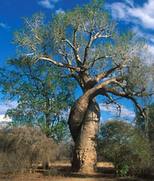
However, both the young man and young woman were already betrothed to people from their own villages. Both refused to give up their dream of marrying and having a child, so they secretly asked the creator for help.
Though their creator did not allow them to marry, he brought the two baobab trees into existence that grew together over the centuries, together as a single entity for all eternity as the young man and young woman had wished to be.”
Legend Four - The Hyena and the Baobab
Adapted from post on http://www.baobabfood.co.uk/baobab-tree
“In this story, the creator is planting the trees on the earth and decides to get each of the animals to help him. So the creator gave every animal a different tree to plant, and they all went about their tasks quite happily, all except for the hyena. Now everyone knows how stupid the hyena is. When he went out, he planted the baobab tree upside down. That is why the roots look like they are growing in the air, and the leaves are buried out of sight in the ground.”
Legend Five - Baobab Tree Flowers
Adapted from post on http://www.baobabfood.co.uk/baobab-tree
“As the baobab tree flowers bloom during the night, the Bushmen believe that whoever plucks the flowers from the tree will be torn apart by lions because the flowers are not simply flowers; they are flowers that are inhabited by spirits.”
THE AFRICAN BAOBAB
Most of the trunks I saw weren't anywhere near the girth of the tree in the photo, and some of the African baobab don't get very tall. Below is a photo I took a photo of a baobab near Victoria Falls.
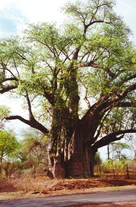
Hopefully, on the off chance anyone from Madagascar might read my novel, I apologize for my flight of fancy and ask that person to cut me some slack. I hadn't seen the ninety-foot–high baobab which grows in Madagascar.
IT'S DIFFERENT IN MADAGASCAR
There are six different species of baobab tree, some of which are very different from their African neighbors. Take a look at the photos of the below of the Giant Madagascar Baobab, and you'll understand my apology. This is where the 90 to 100 feet in height kicks in. Below are Giant Madagascar Baobab and another variety called a bottle tree.
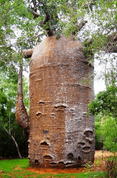
All species have trunks which are mostly hollow and rely on a system of hydraulic pressure to stay upright. The wood is porous and retains water, the extensive root system remains close to the surface for better water absorption. Some of the shorter species account for the name "bottle tree" because of the shape and appearance of the trunk but, in fact, it is called that because the trunk is hollowed and serves as a water reservoir during dry spells. They can store up to 32,000 gallons. Photo:www.powbab.com ►
They look otherworldly, don't they? One article likened them to something out of a Dr. Seuss book. Maybe Madagascar is going on my bucket list.
ALL FOR A BLAST OF HOT AIR
Watch for the release of All For A Blast Of Hot Air in November. Travel with Harriet Ruby, Tour Director Extraordinaire, and her fiancé, Europol spy Will Talbot, as they travel in Zimbabwe and Botswana pursued by and in pursuit of – How'd you guess? – international terrorists. Find out if they finally get their HEA.
Sources - 2010 References
http://amazinglist.net/2013/03/baobab-tree-adansonia-gregorii/http://baobab-tree-of-life.blogspot.com/2010/04/antioxidant-baobab.html
http://baobab-tree-of-life.blogspot.com/2010/04/legends-of-baobab-tree.html
http://www.ehow.com/info_8219711_baobab-tree.html
http://www.baobab.com/baobab-fruit-pulp/legends-of-the-baobab-tree/
http://www.baobab.com/baobab-fruit-pulp/the-baobab-tree-in-african-landscape/
http://www.baobabppc.org.za/home/item/1-myths-legends
http://www.gather.com/viewArticle.action?articleId=281474977821078
Sources - 2018 References
http://www.dailygalaxy.com/my_weblog/2018/06/todays-planet-earth-report-one-of-earths-oldest-and-strangest-trees-are-dying-mysteriously.html
https://aduna.com/blogs/learn/the-baobab-tree
http://www.latimes.com/science/sciencenow/la-sci-sn-baobab-trees-deaths-20180611-story.html
https://thebaobabway.com/baobab-myths-and-stories/
http://ecoproducts.co.za/the-legend-of-the-upside-down-tree/
http://baobabfood.co.uk/baobab-tree/ or baobabfood.co.uk/baobab-tree/
https://www.powbab.com/blogs/news/11483813-how-tall-are-baobab-trees
https://en.wikipedia.org/wiki/Adansonia
https://thomsonsafaris.com/blog/baobab-tree-life/
https://inhabitat.com/grab-a-drink-inside-a-6000-year-old-baobab-tree-at-south-africas-sunland-bar/
https://africablogs.wordpress.com/2009/08/25/the-mythical-baobab/
https://baobabstories.com/en/about-me-baobabs/
https://www.masterfile.com/search/en/african+tree+bark+images
https://www.sciencenews.org/blog/wild-things/huge-hollow-baobab-trees-are-actually-multiple-fused-stems
https://www.sanparks.org/parks/kruger/tourism/activities/lebombotrail.php
http://www.greatthoughtstreasury.com/author/ibn-battuta-or-muhammad-ibn-battuta?page=2
https://reacho.in/discover/6000-year-old-baobab-tree-that-serving-as-sunland-bar-south-africa
https://www.tanzania-experience.com/blog/elephants-and-baobabs/
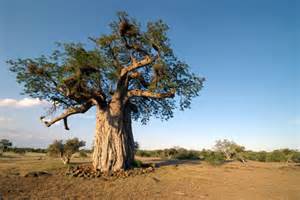
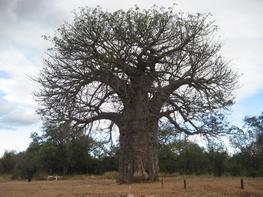
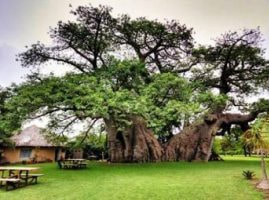
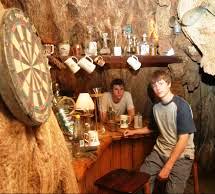
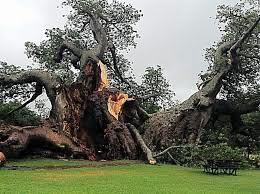
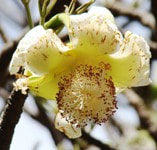
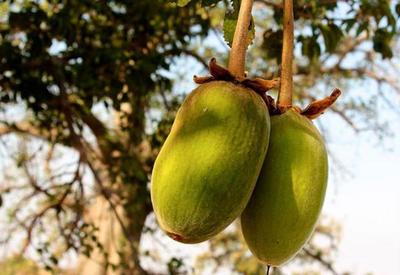
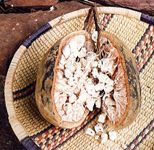
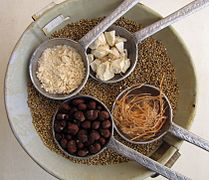
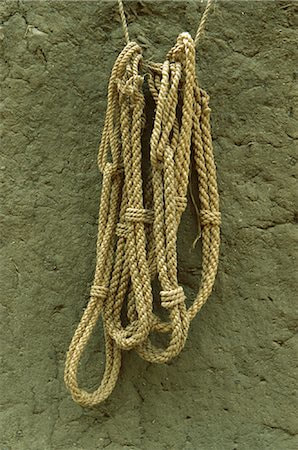
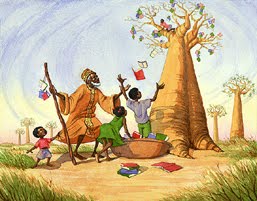
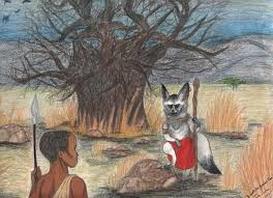
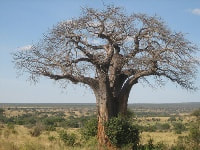
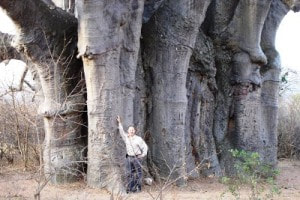
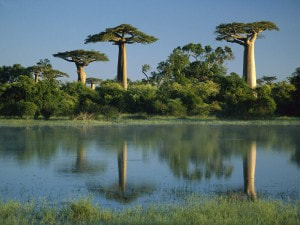
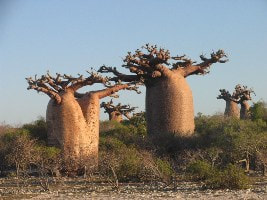
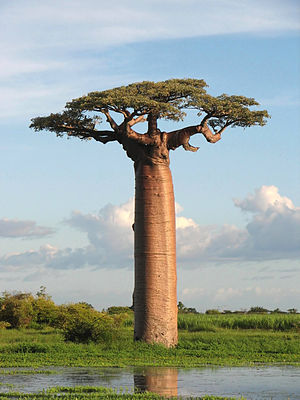
 RSS Feed
RSS Feed